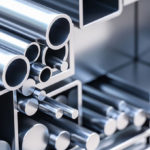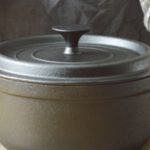1. What is Aluminum Alloy?
Aluminum alloy is a metal compound that primarily consists of aluminum along with other metal components such as manganese, copper, magnesium, silicon, and tin. This combination of materials results in a material that possesses the characteristics of aluminum as well as the other metals used in its composition.
For example, the addition of copper improves strength and shaping ability, silicon increases fluidity and casting ability, manganese supports increased strength and ductility, magnesium helps improve strength and provides corrosion resistance, and magnesium and silicon together increase tensile strength, product shaping, and durability.

2. Outstanding Properties of Aluminum Alloy
Depending on the specific metal components combined with aluminum, aluminum alloy possesses several outstanding properties:
High Strength with Good Corrosion Resistance
The oxidation properties of aluminum alloy enable the formation of a tightly sealed aluminum oxide layer on its surface, providing excellent corrosion resistance. Anodizing aluminum further enhances this resistance, creating aluminum alloy objects with improved durability, such as aluminum rims, water kettles, and pots.

Good Electrical and Thermal Conductivity
Aluminum alloy has excellent electrical and thermal conductivity, only surpassed by silver, copper, and gold. Its relatively low melting temperature allows for easy melting and casting, making it useful for creating household appliances that offer efficient conductivity and save cooking time and energy.

Easy Shaping and Mold Casting
Aluminum alloy is highly versatile and can be easily cast, drawn into sheets or wires, or molded into various shapes. Heating it to around 550 – 660 degrees Celsius allows for the melting and shaping of aluminum alloy into desired product forms.

3. Some Applications of Aluminum Alloy in Daily Life
Aluminum alloy is widely used in various aspects of daily life to meet different needs. It finds applications in:
- Shipbuilding: Aluminum alloy is used for parts that require effective corrosion resistance, such as hydraulic pipes and components in contact with seawater.
- Medicine: The hardness, lightness, and load-bearing capacity of aluminum alloy make it suitable for constructing prosthetic limbs.
- Mechanical Industry: Aluminum alloy is used to manufacture parts for vehicles, machinery, and manufacturing equipment.
- Aerospace: Aluminum alloy’s durability, lightness, and aesthetic appeal make it a common material for aircraft fuselages and airplane machinery.
- Household Products: Aluminum pots, non-stick pans, baskets, and cutlery.
- Furniture: Tables, chairs, stairs, gates, and doors.
- Electronics: Aluminum alloy is commonly used as laptop and smartphone casings, television frames, and component details in electronic devices.

Now that you understand what aluminum alloy is and the benefits it offers, it is essential to consider the proportion of components and carefully read product instructions to ensure maximum durability and longevity when choosing aluminum alloy items!
Exploring the Uses of Aluminum Alloys in Applications
If you’re curious to find out how an alloy works and the different roles it plays in modern industries, then this article is for you. We’ll provide a comprehensive overview of what an alloy is, the kinds available, and the various applications they are used for, ranging from electronics to construction.




































